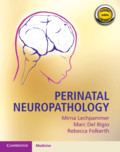Book contents
- Perinatal Neuropathology
- Perinatal Neuropathology
- Copyright page
- Contents
- Preface
- Acknowledgments
- Abbreviations
- Section I Techniques and Practical Considerations
- Approach to Autopsy of the Perinatal Nervous System
- Ancillary Studies
- Prosection Techniques
- Tissue Selection
- Reporting
- Section 2 Human Nervous System Development
- Section 3 Stillbirth
- Section 4 Disruptions / Hypoxic-Ischemic Injury
- Section 5 Malformations
- Section 6 Perinatal Neurooncology
- Section 7 Spinal and Neuromuscular Disorders
- Section 8 Eye Disorders
- Section 9 Infections: In Utero Infections
- Section 10 Metabolic / Toxic Disorders: Storage Diseases
- Section 11 Forensic Neuropathology
- Appendix 1 Technical Considerations in Perinatal CNS
- Index
- References
Approach to Autopsy of the Perinatal Nervous System
from Section I - Techniques and Practical Considerations
Published online by Cambridge University Press: 07 August 2021
- Perinatal Neuropathology
- Perinatal Neuropathology
- Copyright page
- Contents
- Preface
- Acknowledgments
- Abbreviations
- Section I Techniques and Practical Considerations
- Approach to Autopsy of the Perinatal Nervous System
- Ancillary Studies
- Prosection Techniques
- Tissue Selection
- Reporting
- Section 2 Human Nervous System Development
- Section 3 Stillbirth
- Section 4 Disruptions / Hypoxic-Ischemic Injury
- Section 5 Malformations
- Section 6 Perinatal Neurooncology
- Section 7 Spinal and Neuromuscular Disorders
- Section 8 Eye Disorders
- Section 9 Infections: In Utero Infections
- Section 10 Metabolic / Toxic Disorders: Storage Diseases
- Section 11 Forensic Neuropathology
- Appendix 1 Technical Considerations in Perinatal CNS
- Index
- References
- Type
- Chapter
- Information
- Perinatal Neuropathology , pp. 1 - 12Publisher: Cambridge University PressPrint publication year: 2021

